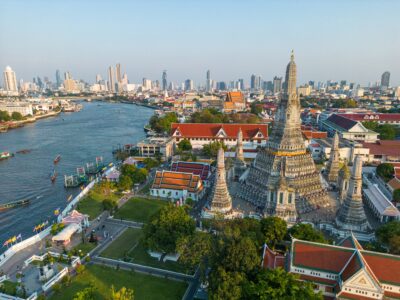Winter sports hubs halt their slide
Snow-starved resorts, ageing ski enthusiasts, and climate change may give the appearance that the ski industry is on a slippery slope. But enthusiasm for frosty activities is growing anew

The skier lowers her goggles and begins her descent, leaving a spray of powdery snow in her wake as she glides down the piste. At the foot of the slope, she heads for a hot drink, chats with friends, and takes the chairlift back to the top for more.
A typical scene for a ski resort, except here both slopes and snow are man-made, the venue—at Harbin in northern China—is undercover, and while outside it is a hot summer’s day, indoor temperature is maintained at below freezing by fans and an underground cooling system.
Welcome to the world of winter sports in 2018. Due to rising incomes, the growing appeal of a Western lifestyle, and the utilisation of advanced technology, there’s a new generation of skiers and snowboarders in Asia.
Resorts such as Niseko in Japan are enjoying increased visitor numbers. Situated in Hokkaido, Japan’s northernmost island, it is one of the world’s snowiest ski destinations with an average of 15 metres of usually dry, light powder every winter, brought in by storms from Siberia.
Across the world brand new resorts are springing up, sparking interest in what was at one time fairly exclusive seasonal sports—a good thing as this once robust global industry faces challenges like never before.
“Climate change is affecting the winter sports industry—from poor season starts to extreme weather conditions, skiers and snowboarders are finding it hard to predict the best time to hit the slopes,” explained Paul Tostevin, Associate Director at Savills, which published Ski Spotlight in 2017.
Long-time favourites Zermatt in Switzerland, Vail in Colorado, U.S., and Saas-Fee, situated in the Swiss Alps near the Italian border, top the 2017 report as the most “resilient”, followed by Aspen (Colorado again), Breuil-Cervinia in Italy, and Heavenly in Lake Tahoe, on the border of California and Nevada. Savills’ ‘ski conditions resilience index’ includes such measures as season length and altitude, as well as snowfall.
Resorts such as Zermatt have come top despite the fact snowfall has been consistently lower than average in the Alps the last four seasons. Things looked brighter for North America, as last season (2016-2017) delivered larger snowfall than normal. The Pacific Northwest received 110 percent of its normal snowfall, and the figure was 115 percent in the Northeast states.
The increase has been a boon, but snowfall in any given season is at the mercy of the weather gods; add to this an ageing population of ski enthusiasts, coupled with changes in how leisure time is spent, and the outlook for winter resorts is not wholly positive.
UNRELIABLE SKI SEASONS ARE BEING COUNTERED BY INVESTMENTS MADE TO ATTRACT VISITORS YEAR-ROUND, AND AN INCREASE IN SNOWMAKING, A TECHNOLOGY THAT IS ADVANCING RAPIDLY
It’s quite a change for an industry that once provided a booming economy for the resorts mentioned; and one that encompassed lucrative residential property and second home investments.
But, said Tostevin, the industry is fighting back. “Unreliable ski seasons are being countered by investments made to attract visitors year-round, and an increase in snowmaking, a technology that is advancing rapidly.”
The same report revealed Austrian resorts have spent EUR1 billion (USD1.2 billion) in snowmaking equipment in the last decade, such that “snow-starved slopes can be topped up.” Today, no less than 60 percent of Austrian slopes are covered with artificial snow.
Early this year, organisers behind Pyeongchang Winter Olympics employed U.S. company Snow-Making, Inc. (SMI), which mounted 100 snow cannons on towers and carriages in Jeongseon, and deployed an additional 10 mobile snow guns for portable use. Though the city was undeniably wintery during the event—temperatures regularly dropped below –10 degrees Centigrade—it was actually too cold for adequate snowfall.

South Korea hosted the Summer Olympic Games in 1988, which kickstarted the country’s transformation into an economic powerhouse and a global leader in the electronics industry. In the case of the Pyeongchang Games, one of the organisers’ stated goals was to help the country become a top winter sports destination in Asia.
While Pyeongchang’s legacy remains to be seen, interest in skiing from key emerging markets like China is rising fast. “Middle classes in China, Eastern Europe and Latin America are the skiers of tomorrow and may offset a decline in some mature source markets,” Tostevin asserted.
This is echoed by Carrie Law, CEO of Juwai.com, a China-based international real estate website. “China is the world’s largest beginner ski market, which promises huge future growth, and the ski property industry is nascent,” she explained. “The downside of this is that there are relatively few long-time skiers in China. Chinese don’t aspire to the ski-chalet second home as much as to a beach, vineyard, or sophisticated urban lifestyle.
“Our research shows that about 18 percent of Chinese skiers have skied overseas, the top destinations being Japan, South Korea, and Switzerland, but there are only about 12 to 15 million Chinese skiers. And most are beginners, rather than experienced skiers who grew up with the sport and in the mountains.”
FOR THE TIME BEING, SKI AREAS ARE CONSIDERED MORE AS SKI PLAYGROUNDS THAN AS MOUNTAIN RESORTS, AND ONE-TIME SKIERS ACCOUNT FOR A CONSIDERABLE PORTION OF SKIER VISITS
Laurent Vanat, a seasoned skiing expert who produces an annual report on the sport, put things more bluntly: “There is no culture of skiing. Most Chinese skiers do not ski more than once per season. Some ski areas even have paid employees to help skiers get up after they fall and to retrieve their equipment!”
In China, added Vanat, “skiing is consumed as a kind of entertainment product rather than a sport that requires repeated practice. For the time being, ski areas are considered more as ski playgrounds than as mountain resorts, and one-time skiers account for a considerable portion of skier visits. Skiing is nevertheless becoming more and more popular among Chinese between the ages of 25-35. About 80 percent of skiers are under 40.”
In 2016, China’s State Council approved the 2016-2020 National Fitness Plan, which laid out ambitious targets for fitness levels and increased sports participation. It includes promoting winter sports on a large scale, utilising the Beijing 2022 Winter Olympics to spark interest amongst residents. The aim is to have 300 million people participating in a form of winter sports by 2025.
It’s an ambitious goal, especially given China’s topography. While there is mountainous terrain, many peaks are too small to be suitable for skiing, or are too steep.
But these limitations have led to some creative solutions. Muchengjian Colliery, situated in a western suburb of Beijing and which once produced coal, is being turned into an air-conditioned year-round ski course with an indoor ski tunnel and trails on the slopes above. It will form part of a winter sports park scheduled to host snowboarding events during the Winter Games.

The location of nearby Nashan resort means it enjoys only a smattering of the white stuff in any given season, but is home to 29 state-of-the-art snow-making machines. And last summer, the northern Chinese city of Harbin opened the world’s largest indoor ski resort. The Harbin Wanda Indoor Ski and Winter Sports Resort, which cost CNY40 billion (USD6.3 billion) to build and features slopes that can accommodate 3,000 people at a time. The vast resort also houses a shopping centre, cinema, outdoor theme park, ice hockey rink, theatres, and hotels.
It remains to be seen if the Olympics-focused drive, and the increase in resorts in China and beyond, will result in a huge uptake in winter sport participation in Asia. Certainly rising incomes and a desire to escape smoggy cities means numbers are up, but winter sport enthusiasts are—for now—as likely to go abroad for their fix.
“There is definitely a huge increase of customers from other Asian countries outside Japan,” said Wu Acme, marketing manager at Niseko resort in Japan, which enjoyed 313,838 visitors last season. “The top three countries for visitors were Australia, Hong Kong and Singapore, with China and Thailand rapidly growing as well.”
And while new technology and promotional drives may encourage some to try out skiing or snowboarding, it seems a much more basic ingredient may still have the biggest draw: real snow.
Wu Acme added: “I wouldn’t necessarily say the increase in visitors from Asian countries is because of the Winter Olympics. We have added equipment such as lifts in two of the resorts to better accommodate our beginner customers and we have famous athletes visit, so people see it being promoted.
“But really Niseko has become a popular destination mainly because of the amazing quality of snow.”
This article originally appeared in Issue No. 148 of PropertyGuru Property Report Magazine
Recommended
Meet the vagabond architect behind India’s housing scene
Vinu Daniel is helping to shake up India’s home building setting
Where Asian real estate stands in a fragmented, warmer world
Asia’s real estate industry faces many and varied challenges as external factors continue to bite
6 sights to see in Singapore’s Marine Parade
Handily located Marine Parade has emerged as a vibrant investment choice in the Lion City
There’s a township dedicated to health and wellness in Malaysia
Property seekers have their health needs catered for at KL Wellness City








